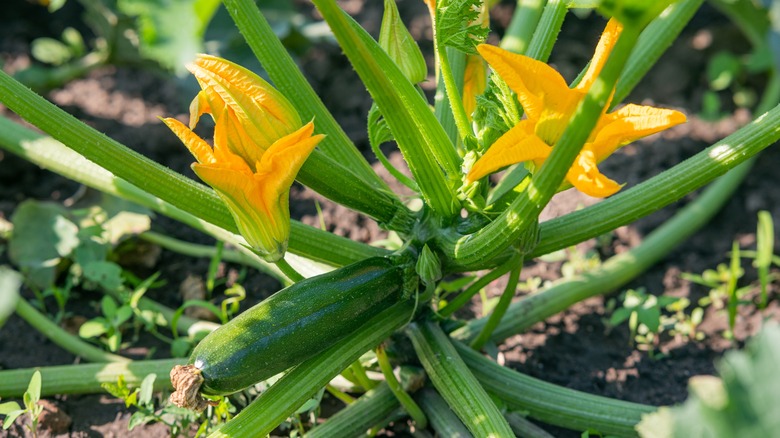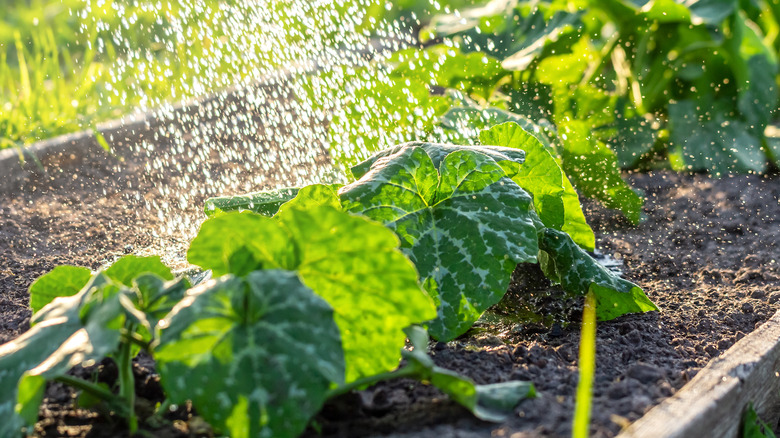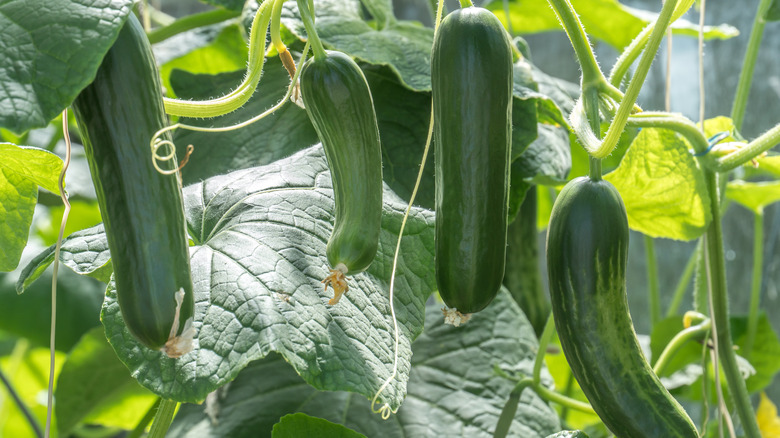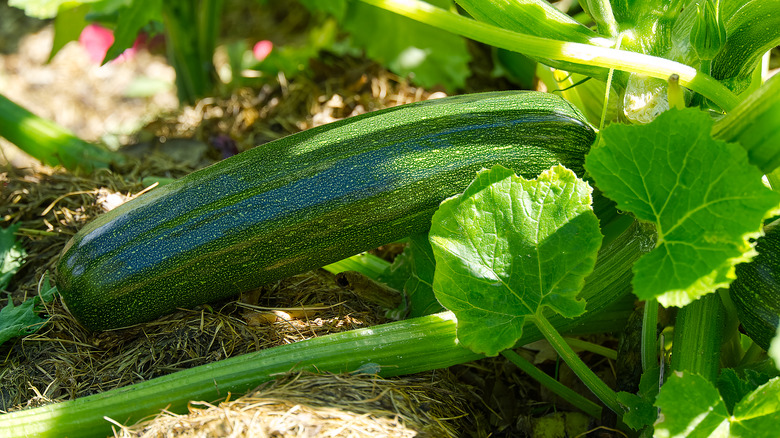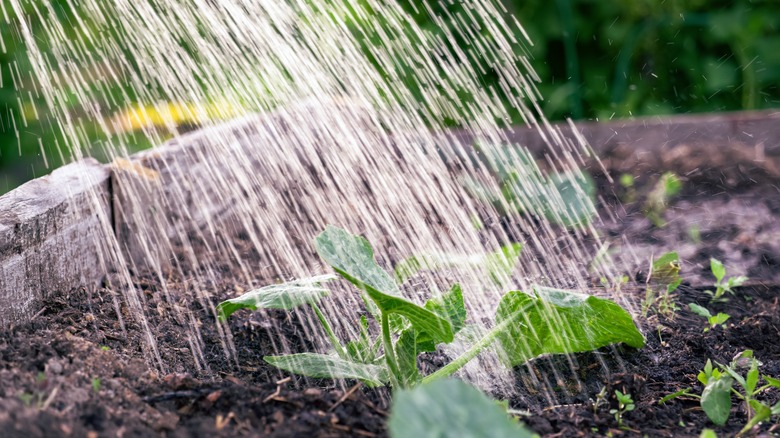Mistakes You're Making When Growing Zucchini Plants
Zucchini is one of the most popular vegetables to grow among gardeners of all experience levels due to its wide range of use in culinary dishes, in addition to the fact that it is pretty easy to grow in the right circumstances. With that being said, the most common mistake gardeners make when growing zucchini is trying to do so when the sunlight, water, soil, and spacing conditions are not the most ideal for the plant.
Planting your zucchini in the wrong soil or in an area that doesn't receive enough sunlight, not watering the plant correctly, and planting them too close to other zucchini and neighboring plants are some of the most common — and most avoidable — mistakes that gardeners tend to make when trying to grow zucchini. Knowing the growing conditions that zucchini prefer can help you grow strong, healthy plants that produce a lot of vegetables. Here are some of the easy-to-avoid mistakes you could be making.
Not planting in the right soil
Just like any type of vegetable, your zucchini seeds or plants need to be planted in soil that is plenty rich in nutrients in order to grow to their full, delicious potential. If you want bountiful plants that continue to produce vegetables throughout the harvesting season, the soil you plant your zucchini in can play a major role. While there are many zucchini varieties you can choose, most tend to perform the best in loam-rich soil that offers plenty of drainage, and is made up of roughly 40% each of sand and silt, in addition to 20% clay. Zucchini also perform best in soil with a pH level that falls between 6.0 and 7.5.
Adding compost and other organic materials, such as mulch, directly to your vegetable garden beds prior to planting your zucchini is a great way to help boost nutrient levels in the soil and guarantee your zucchini have access to all that they need to thrive. Minerals and nutrients, and even the bacteria and fungi, in these organic materials help enrich the soil. Composting your soil can also build immunity in your plants to help them fight disease, and can extend the harvesting season.
If you can, it's also a good idea to avoid planting your zucchini in soil that other vegetables belonging to the cucurbit family were grown in previously. In addition to zucchini, this also includes vegetables such as cucumbers, watermelon, squash, and cantaloupe. This can help cut down on the risk of spreading disease.
Not planting in the right area
Not creating the vegetable garden in an area of your yard that receives the proper amount of sunlight is another mistake many people discover they've made when it comes to trying to grow zucchini. Zucchini is a full-sun plant, and therefore needs to receive at least six to eight hours of direct sunlight every day. Trying to grow your zucchini in a shaded or partly-shaded area that receives less than this won't allow your plant to grow to its full potential, or may lead to your plant not producing any zucchini at all.
In addition to planting your zucchini in an area that receives enough sunlight, you also want to make sure you are planting it in an area that allows for proper drainage. Attempting to cultivate zucchini in a vegetable garden that houses a lot of standing water can lead to common issues like root rot, which can destroy your plant and your harvest.
Trying to grow your plants too close together
Because zucchini plants can grow to be quite large and also require a substantial amount of nutrients, it's important to account for that when planting and give them enough space to properly grow. Placing your zucchini plants too close to one another or too close to another type of plant can lead to much smaller vegetables and less bountiful harvests. Because zucchini require an abundance of nutrients from the soil to grow to their full potential, planting too many in one area forces them to compete for those nutrients and prevents each from getting all that they need to thrive.
As a general rule of thumb, it's best to position each zucchini plant roughly 36 inches away from another zucchini plant or from any other nearby plants. Of course, this can vary depending on the variety of zucchini you are growing. Make sure you follow specific instructions on the packaging of your plant or seed for guidelines on how to properly arrange them. Giving your zucchini plants plenty of space will ensure that each is able to get the nutrients that it needs from the soil without the risk of it being stolen by nearby plants.
Not watering correctly
As with any plant, proper watering is one of the most important factors in successful growth. While underwatering your zucchini plants is a common mistake many people make, overwatering them is just as common and just as easy to do. Zucchini do need to be watered generously, though too much water can lead to issues like root rot and other fungal infections, such as powdery mildew, which zucchini is susceptible to when water accumulates at the base of the plant. Most zucchini varieties should be given an inch of water once a week in the cooler months of spring, with an increased frequency of up to three times a week when temperatures heat up. If the soil still feels dry after adding an inch of water, double the amount of water you give it.
When watering, avoid showering your zucchini from directly overhead and getting the leaves wet, as this can increase the risk of rot and disease. Instead, water the soil at the base of the plant. As an added preventive measure against root rot and powdery mildew, you can also plant your zucchini on a slight mound. This will encourage excess water to flow away from the base of the plant.
